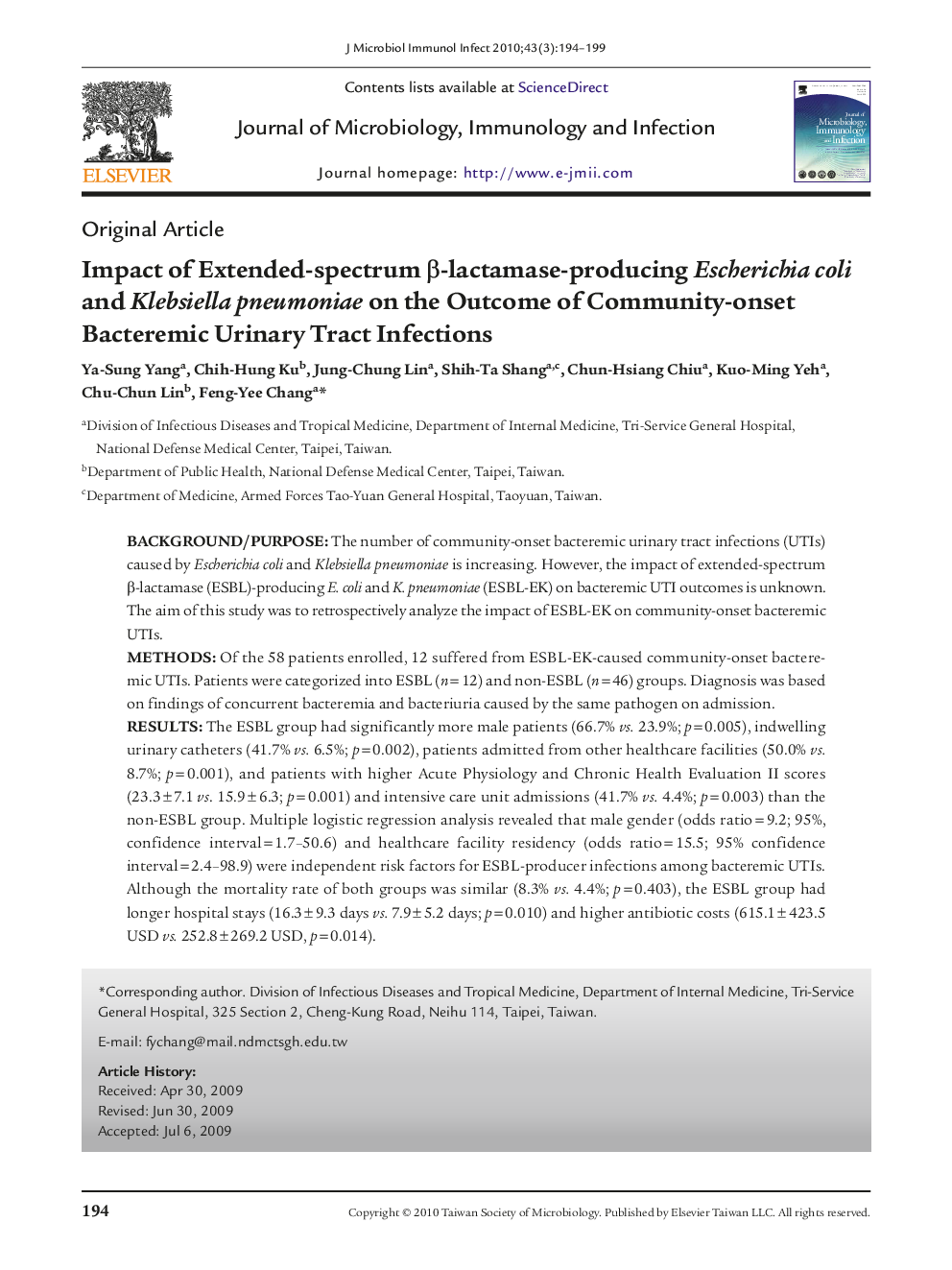| Article ID | Journal | Published Year | Pages | File Type |
|---|---|---|---|---|
| 3378285 | Journal of Microbiology, Immunology and Infection | 2010 | 6 Pages |
Background/PurposeThe number of community-onset bacteremic urinary tract infections (UTIs) caused by Escherichia coli and Klebsiella pneumoniae is increasing. However, the impact of extended-spectrum β-lactamase (ESBL)-producing E. coli and K. pneumoniae (ESBL-EK) on bacteremic UTI outcomes is unknown. The aim of this study was to retrospectively analyze the impact of ESBL-EK on community-onset bacteremic UTIs.MethodsOf the 58 patients enrolled, 12 suffered from ESBL-EK-caused community-onset bacteremic UTIs. Patients were categorized into ESBL (n=12) and non-ESBL (n=46) groups. Diagnosis was based on findings of concurrent bacteremia and bacteriuria caused by the same pathogen on admission.ResultsThe ESBL group had significantly more male patients (66.7% vs. 23.9%; p=0.005), indwelling urinary catheters (41.7% vs. 6.5%; p=0.002), patients admitted from other healthcare facilities (50.0% vs. 8.7%; p=0.001), and patients with higher Acute Physiology and Chronic Health Evaluation II scores (23.3±7.1 vs. 15.9±6.3; p=0.001) and intensive care unit admissions (41.7% vs. 4.4%; p=0.003) than the non-ESBL group. Multiple logistic regression analysis revealed that male gender (odds ratio=9.2; 95%, confidence interval=1.7–50.6) and healthcare facility residency (odds ratio=15.5; 95% confidence interval=2.4–98.9) were independent risk factors for ESBL-producer infections among bacteremic UTIs. Although the mortality rate of both groups was similar (8.3% vs. 4.4%; p=0.403), the ESBL group had longer hospital stays (16.3±9.3 days vs. 7.9±5.2 days; p=0.010) and higher antibiotic costs (615.1±423.5 USD vs. 252.8±269.2 USD, p=0.014).ConclusionMale gender and healthcare facility residency are risk factors for ESBL-producer infections among patients with community-onset bacteremic UTIs. Patients with bacteremic UTIs caused by ESBL-EK also have prolonged hospital stays and higher antibiotic costs. Early detection of ESBLs and appropriate antibiotic coverage are likely to shorten hospital stays and reduce medical costs.
